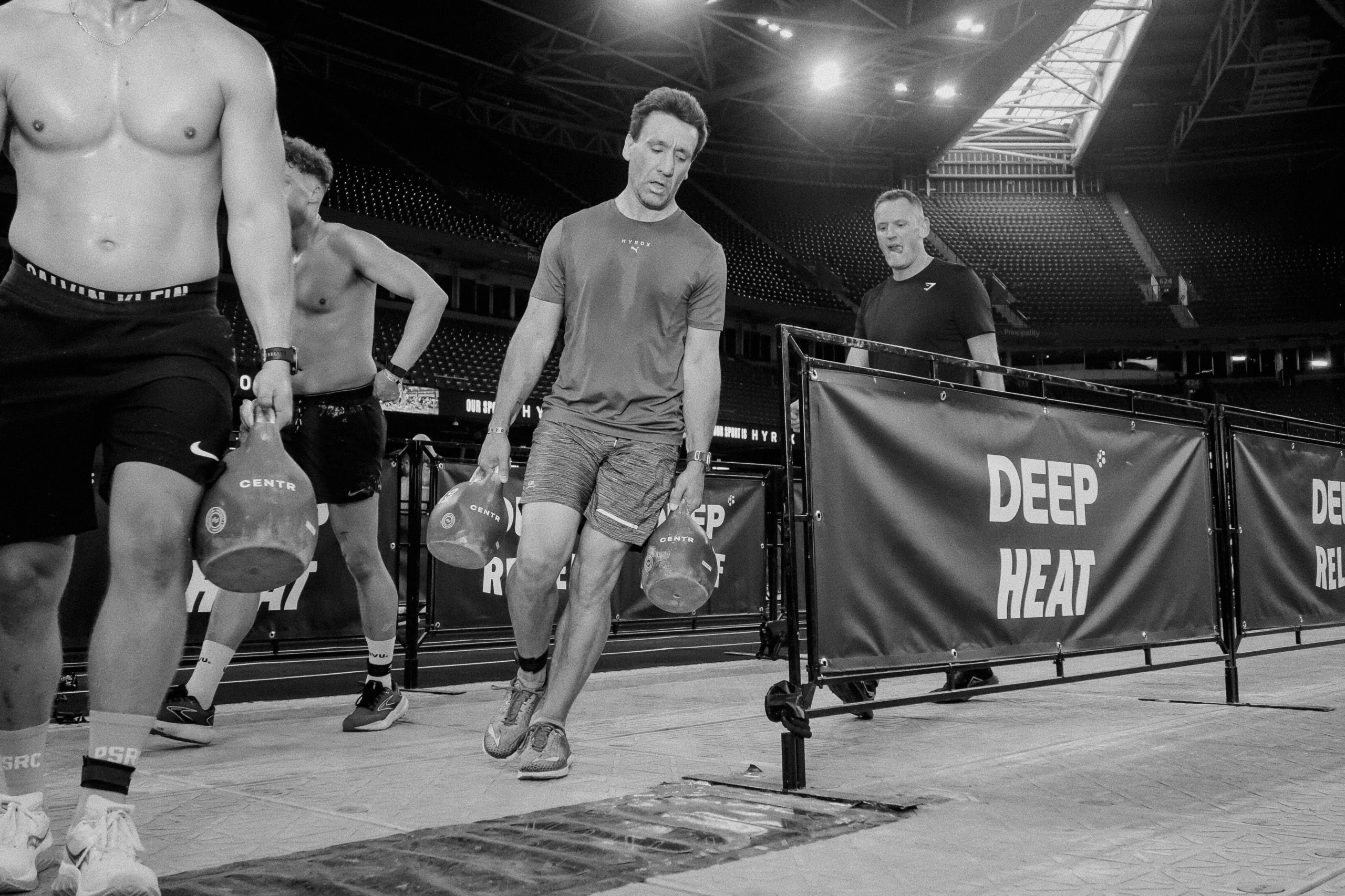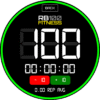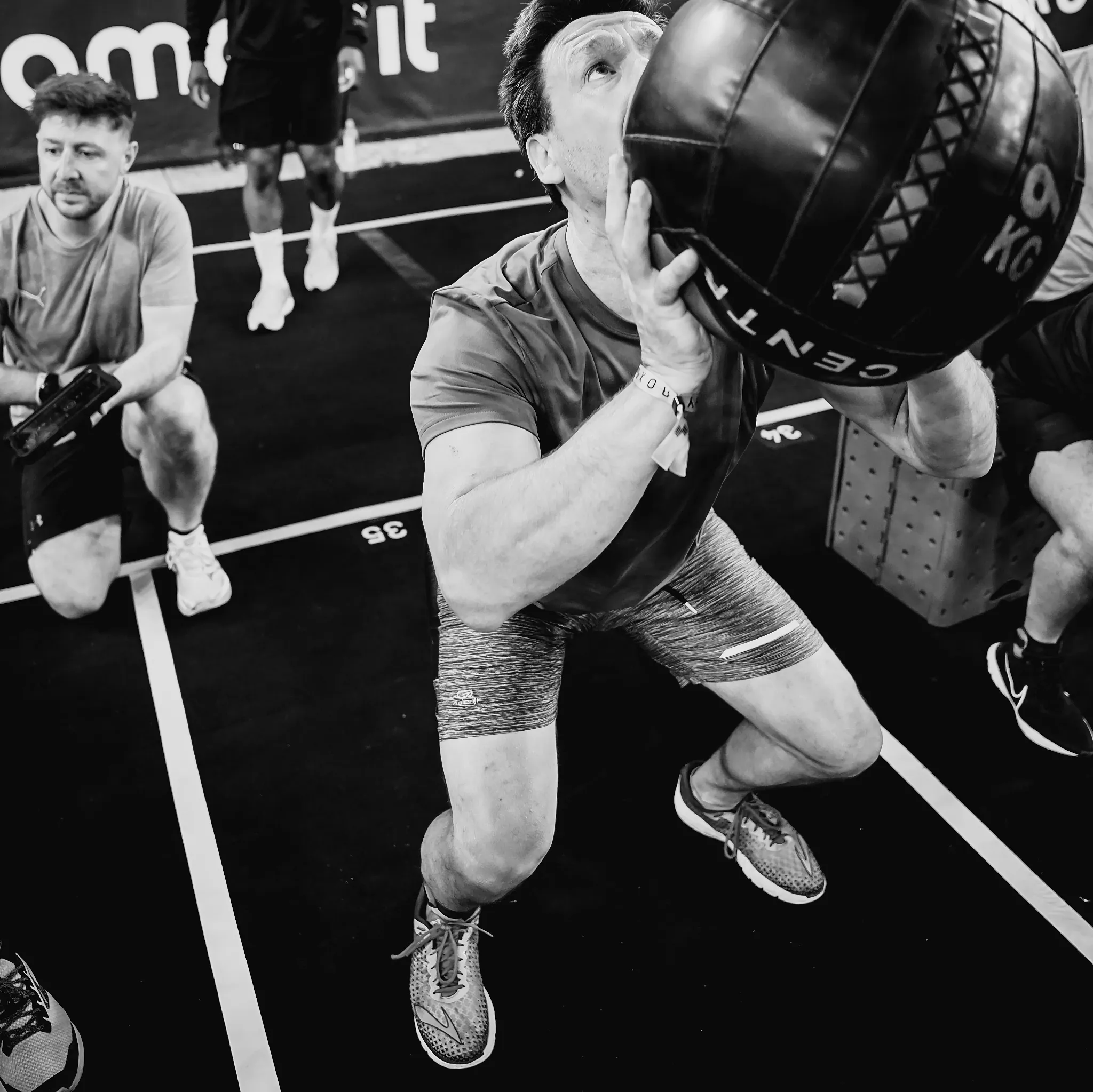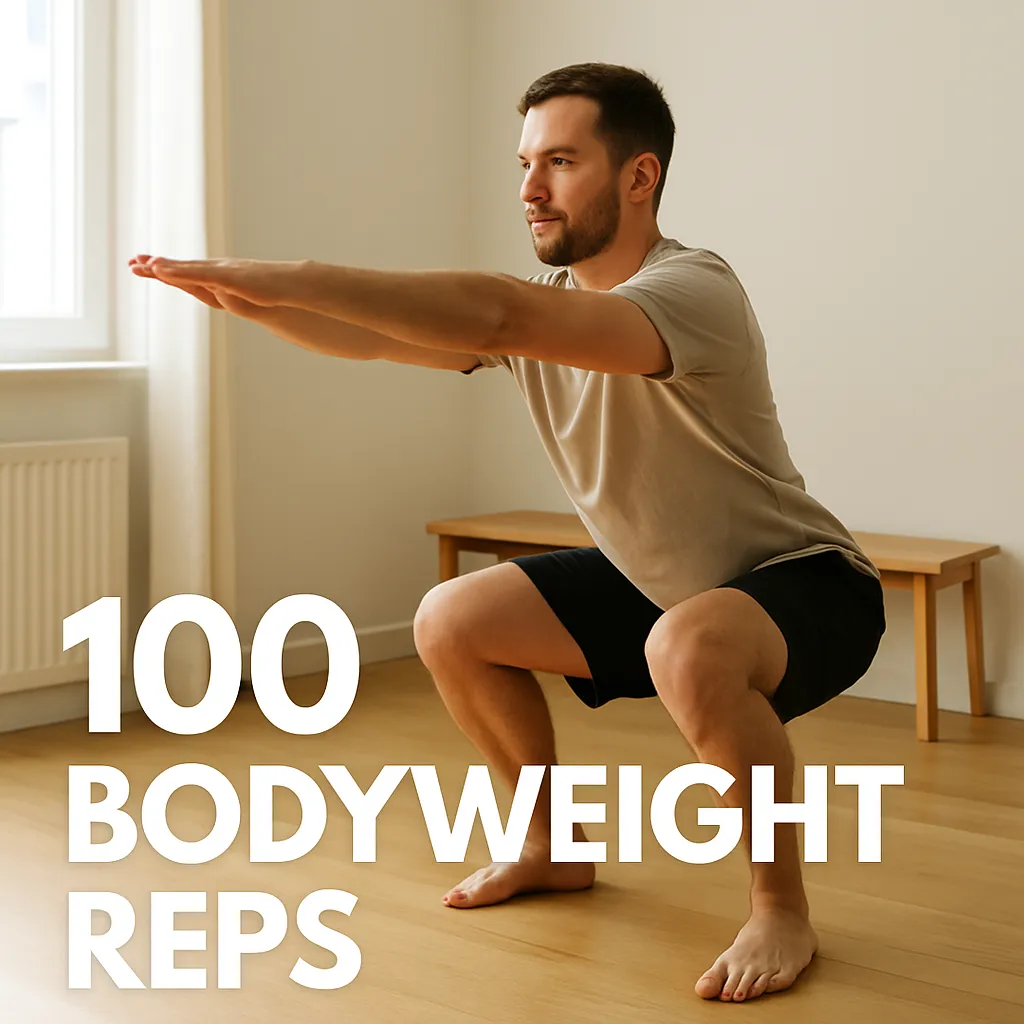Introduction: Strength Under Fatigue
By the time you reach the farmer’s carry, your arms and grip are already taxed from sleds and pulls. This short 200-metre carry challenges not just strength but posture and composure.
Athletes who treat it as recovery walk efficiently; those who rush lose form and time.
“The farmer’s carry is where composure meets control rush it and you’ll lose more than seconds.” — RB100.Fitness
Station Overview
Distance: 200 metres
Implements: Two kettlebells or dumbbells
Loads (Season 2025/2026):
- Men Open: 2 × 24 kg
- Women Open: 2 × 16 kg
- Men Pro: 2 × 32 kg
- Women Pro: 2 × 24 kg
Your task is simple: carry both implements for 200 m without dropping them but efficiency comes from posture, grip and breathing.

Technique Breakdown
1. Setup
- Pick the weights up using a hinge, not a squat.
- Grip firmly in the centre of each handle.
- Stand tall, core tight, shoulders packed.
2. Posture
- Maintain neutral spine and open chest.
- Keep the bells close to your sides.
- Avoid leaning or twisting think “shoulders over hips.”
3. Breathing
- Inhale through nose, exhale through pursed lips.
- Short rhythmic breaths help maintain intra-abdominal pressure.
- Never hold your breath tension without airflow causes fatigue.
4. Steps and Cadence
- Walk with short, fast steps heel to toe.
- Avoid side sway.
- Keep head neutral and eyes forward to stabilise the core.
Common Mistakes and Fixes
| Mistake | Effect | Fix |
|---|---|---|
| Leaning to one side | Back or oblique strain | Engage core, even grip pressure |
| Swinging weights | Grip fatigue | Keep arms still, step evenly |
| Hunching shoulders | Upper-trap fatigue | Retract shoulder blades slightly |
| Shallow breathing | Early grip failure | Controlled rhythmic exhales |
| Over-gripping | Forearm pump | Relax fingers slightly between steps |
Pacing and Strategy
The farmer’s carry is as much about pacing as power.
Open Division:
- Target 200 m in 1:20–1:45
- Split into 50 m intervals with quick resets if needed.
Pro Division:
- Target 200 m in 1:10–1:30
- Aim to maintain constant motion every drop costs time and energy.
When fatigue hits, shake out one hand at a time rather than setting both bells down.
Linked reading: How to Pace Each HYROX Station for Maximum Efficiency
Training for Grip and Posture Endurance
Direct Farmer’s Carry Work
- Heavy Carries: 5×40 m at race load or heavier.
- Tempo Carries: 3×30 m with slow, deliberate steps.
- Single-Arm Carries: 4×20 m each side for oblique balance.
Accessory Work
- Dead hangs (3×30–45 s)
- Towel or Fat Grip holds (3×20 s)
- Romanian deadlifts (4×10)
- Standing planks or suitcase carries for unilateral stability
These build the grip and trunk endurance to carry consistently without collapse.

Integration Into Simulation Training
In full simulations, position the farmer’s carry as an active recovery station after the row:
1 km run → 1,000 m row → 200 m farmer’s carry → 1 km run.
Keep pace steady; use breathing control to reset heart rate before the final lunges and wall balls.
See HYROX Simulation Workouts: Train Like It’s Race Day.
Grip Recovery Between Events
Grip fatigue compounds across races.
Include forearm stretching, wrist rolls, and contrast baths post-training.
For advanced athletes, use finger extension bands to strengthen antagonists and prevent overuse.
For full recovery strategy, read HYROX Recovery Routine.
Summary: Calm, Controlled, and Efficient
The farmer’s carry rewards composure under fatigue.
Posture, breathing, and rhythm matter more than brute grip strength.
Train balance and control, and you’ll turn this short carry into a controlled recharge before the final stations.
“The strongest athletes don’t rush they walk tall, breathe deep, and never drop the weight.” — RB100.Fitness
About HYROX Season 2025/2026
- Global race circuit: September 2025 – June 2026
- Standardised load per division worldwide
- Consistent distances and judging
Plan your next race at the RB100 Fitness Racing Events Calendar.












